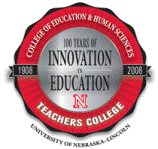Education and Human Sciences, College of (CEHS)
Teaching fluency with QuickReads
Document Type Article
This paper is based on presentations made at the American Educational Research Association meeting in Chicago (2007), and the Society for Scientific Studies of Reading meeting in 2008.
Abstract
A critical component of reading development identified by the National Reading Panel (2002) is fluency. Fluency is often described as accurate, rapid, and expressive reading (Kuhn & Stahl, 2003), and is generally acknowledged to be an outcome of well-developed word recognition skills. Recently, researchers have placed considerable focus on the understanding of fluency development; the factors that influence fluency growth, and methods or approaches that help produce fluent readers [See Kuhn & Stahl (2003) and Rasinski & Hoffman (2003) for recent reviews]. There is a need to better understand what methods and conditions positively impact fluency development in young readers. This study examined the impact of one fluency curriculum (QuickReads) in two different presentation formats on reading fluency, vocabulary, and comprehension skills for students in 2nd through 5th grades. The QuickReads curriculum is based on strong theoretical foundations, and is organized for ease of use by teachers. This study reports the results of a large-scale implementation of QuickReads, comparing its teacher-mediated print delivery format and technology delivery format to standard classroom fluency instruction.

